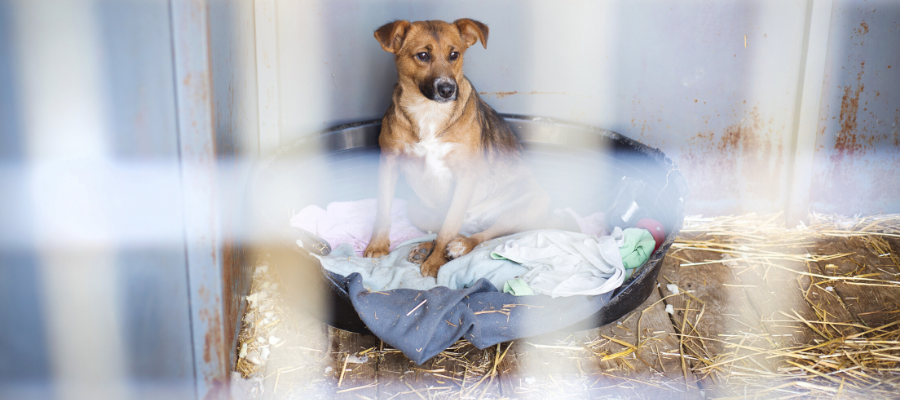Not every potential foster parent understand the variety of needs your foster program has. Too often, we forget to highlight specific needs that capture the attention of the right homes. Rather than focusing on specific animals, try showcasing your foster program in a video by animal types to best highlight your needs. You won’t have to update it as frequently and you are sure to attract new foster homes!
In your video, show the animals in your foster program that need care. This could include animals with medical needs, kittens and puppies, pregnant animals, animals that do not do well in shelters or loud places, and animals with behavioral issues. Showing animals with a wide variety of needs can help potential fosters understand the different levels of care that may be required.
Animals That Need Medical Care
Cats and dogs that have just come out of surgery or are currently recovering from an illness or injury require a lot of attention and care. In your video, show exactly how to care for animals that have medical needs. This could include how to administer fluids, give medication, change bandages, and dressings, among other medical procedures. We also suggest including in your video signs to look for if someone were to suspect the worsening of symptoms or other signs of illness.

Mothers, Kittens, and Puppies
In your video, show how fosters are to care for mother dogs and cats after they have just given birth. In addition to the mothers, teach fosters how to care for newborn kittens or puppies. This may include bottle feeding puppies and kittens, how to keep them warm and comfortable, and what to do if a puppy or kitten is not nursing.


Let fosters know that they may need to give puppies and kittens a place to live until they are old enough to return to the shelter for adoption or to a permanent home. Share with them that mothers, kittens, and puppies normally require a lot of time and care to make sure that they are healthy and growing properly.
Pregnant Animals
Oftentimes, pregnant dogs and cats need a peaceful and comfortable place to live until they give birth. This is where foster homes come in! Show fosters how to care for expecting mothers, including how to create a comfortable space for the animal, what to do when an animal starts to go into labor, and how to get in touch with the vet if necessary. If there are certain signs of labor or potential complications that a foster should be aware of, include what the foster should look for and how to determine if medical care is needed.


Animals That Do Not Do Well In Shelters
Some animals are very timid and get scared in loud shelters. Shelter environments can cause anxiety in animals and they need a quiet, calm home to live in until adoption. These animals most likely need homes without children or loud noises, so make sure that this is very clear on your foster application.


In addition to timid animals, some cats and dogs may have come from abusive homes or unsafe situations that make being around other animals and strangers very scary. This can cause an animal to be shy, avoid others, be aggressive, and act out of fear, all of which can discourage adopters. Fosters can work with these animals to make them feel more comfortable around people and other animals.
These animals can show their true personalities when they are in a more comfortable and safe environment—likely improving their chances for adoption! Your rescue or shelter may want fosters to work on socialization and helping these animals become comfortable with other people and animals. This can be a potentially dangerous situation, so if socialization is only for the experienced, make sure to include that in your video.
Behavioral Issues
Some animals come from previous homes where they learned bad habits or were never trained at all. These animals need extra attention and someone to work with them in a home setting to learn good manners and break bad habits. This could include learning not to chew on common household items such as curtains, carpets, and shoes. It could also mean taking a dog on a walk and leash-training him or her, including learning not to pull and obeying basic commands.


Show fosters how to work on all of these behaviors and what to practice when they bring home an animal with behavioral issues. We know that fosters are not professional animal trainers, but working with an animal to learn basic good manners like not jumping on furniture or destroying a home can be so helpful! If your shelter is willing to hire and pay for an animal trainer to work with fosters and their animals, talk about that in your video and what that process will look like.
Fostering an animal with specific needs can be such a rewarding and beneficial process! Every animal deserves a chance and reminding potential fosters just how much impact they can be in an animal’s life.















